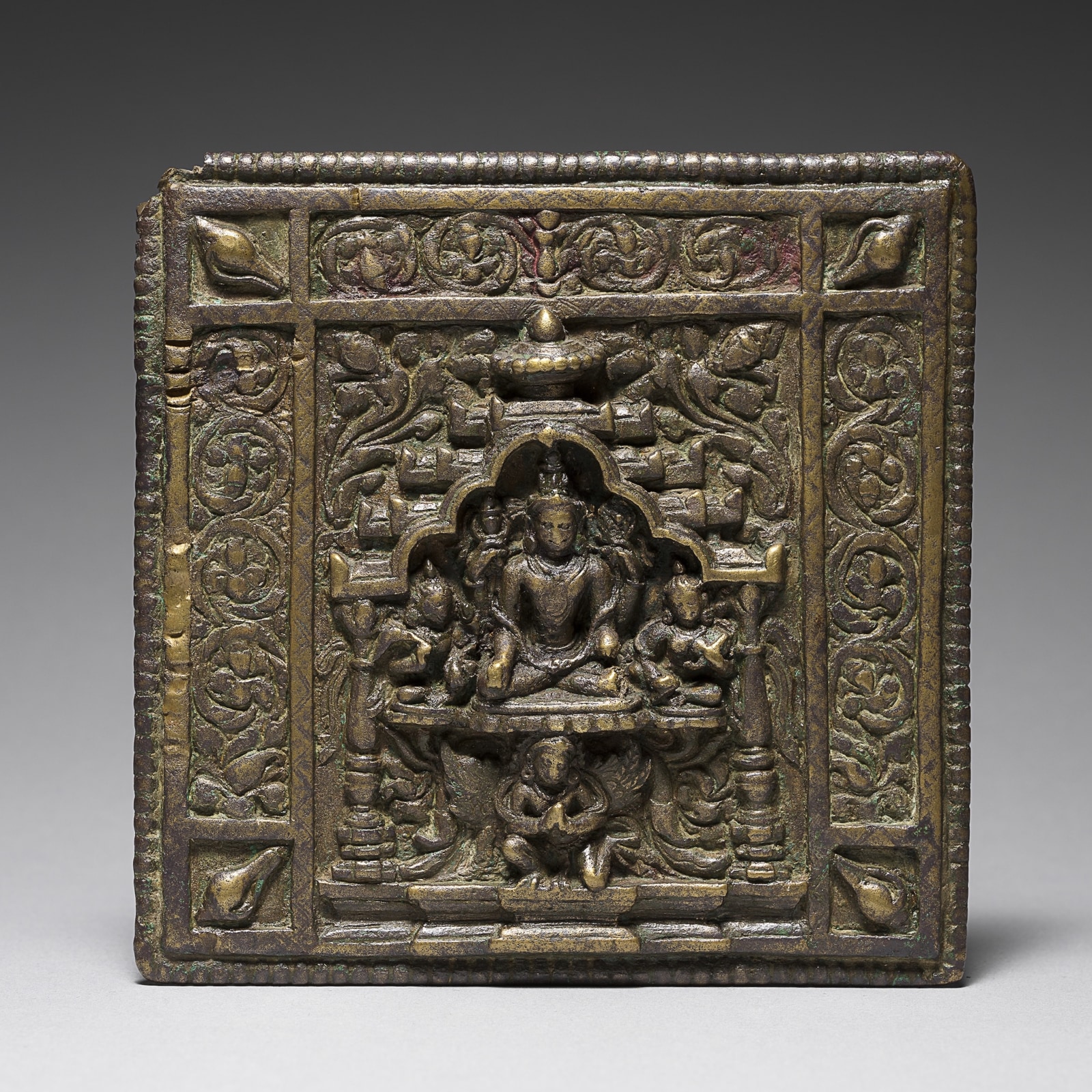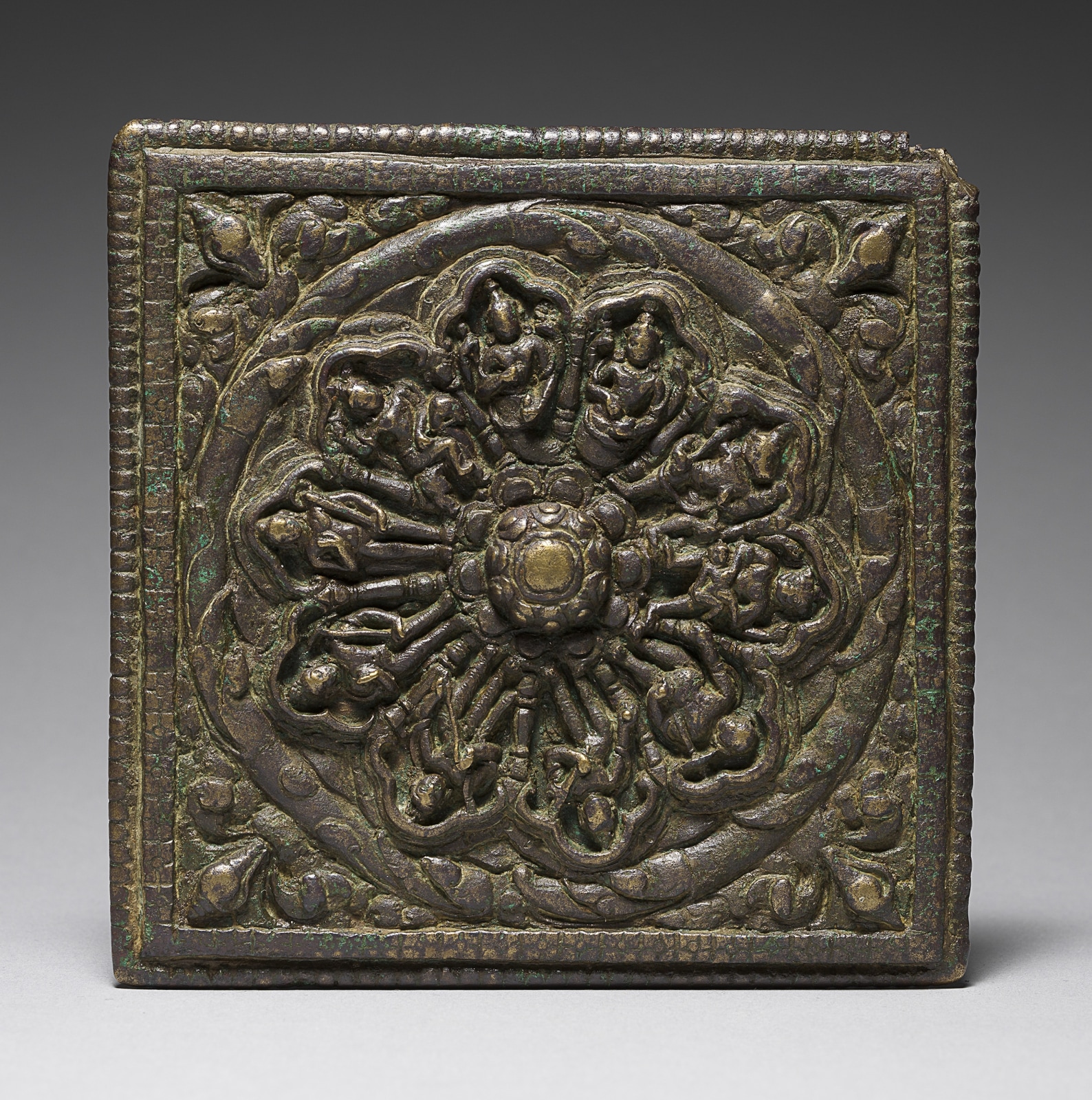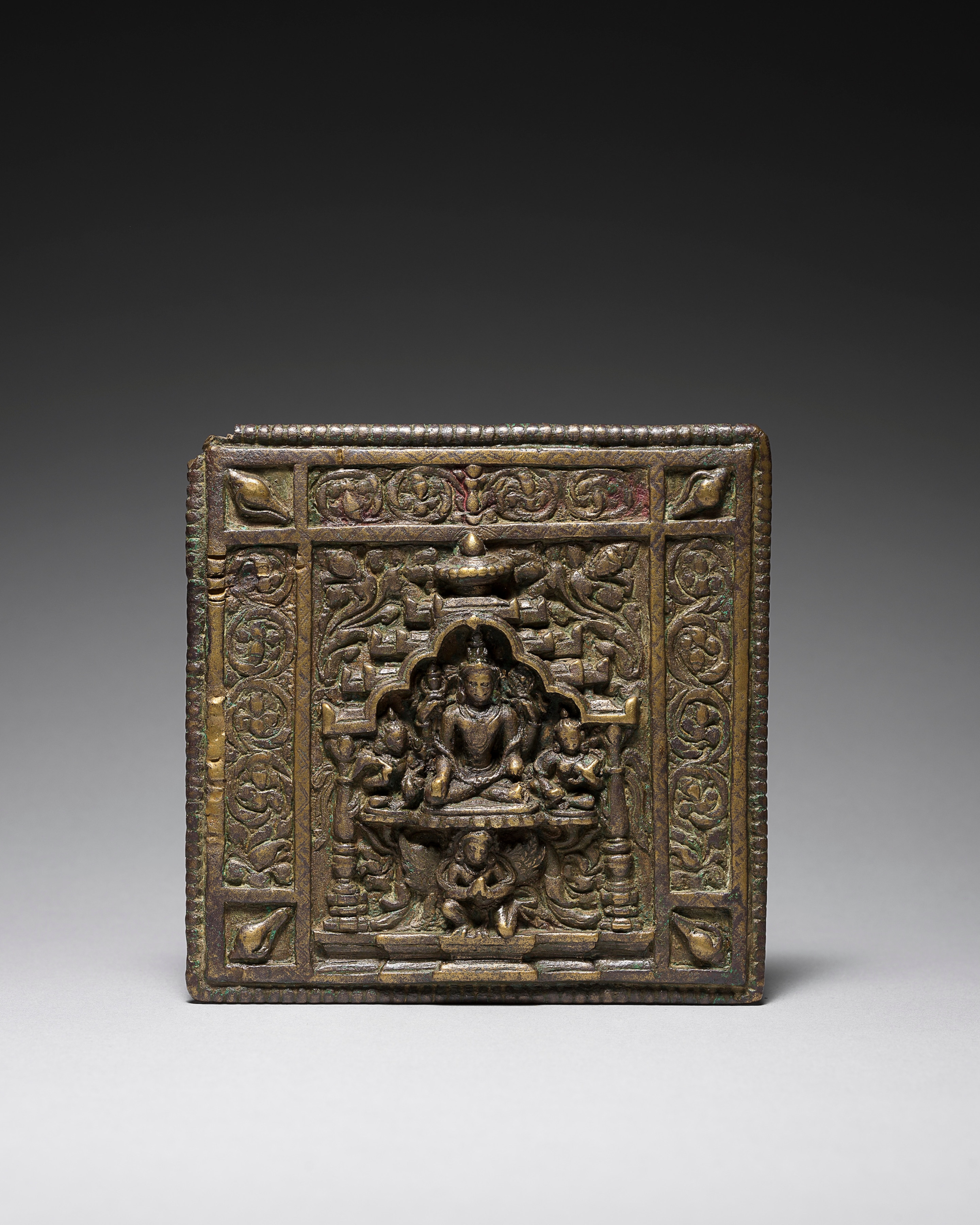
Provenance:
Sotheby's, New York, September 22, 2000, no. 147
New York Private Collection
This square double-sided panel has a finely beaded border. On one side is a central enthroned image of Vishnu within a columned and tiered shrine. He is seated in royal ease on a lotus throne and flanked by his spouses Sridevi and Bhudevi, holding their attributes the flywhisk and vina respectively. The triumvirate are supported on the back of a kneeling image of winged Garuda, Vishnu’s half-man, half-eagle vehicle.

The reverse of the plaque is in the form of an open lotus with ten incarnations of Vishnu around the raised central bud, the spandrels with conchs among foliage, and framed by a border of incised square rosettes.
This two-sided bronze metal plaque was designed as a portable focus for worship. These plaques have been found throughout the Bengal region and are most associated with the Pala period in India. They were made for pilgrims who could utilize them in portable shrines during travel or installed in home altars
Dr. Emanuel Haque in Bengal Sculpture, Bangladesh National Museum, 1992, notes: "Twenty-three square slabs, all in stone, except one which is in metal, have been discovered from different parts of Bengal showing Vishnu on one side and his ten incarnations on the other side. These are the kind of votive relics probably kept in the Vishnu temples to be sold to devotees or pilgrims for carrying back home as a memento of their visit to the shrine.” For a related example see Jane Casey, Medieval Sculpture from Eastern India: Selections from the Nalin Collection, 1985, no. 61; also see Joan Cummins, Vishnu: Hinduism's Blue-Skinned Savior, 2011, p. 120, cat. no. 42.

